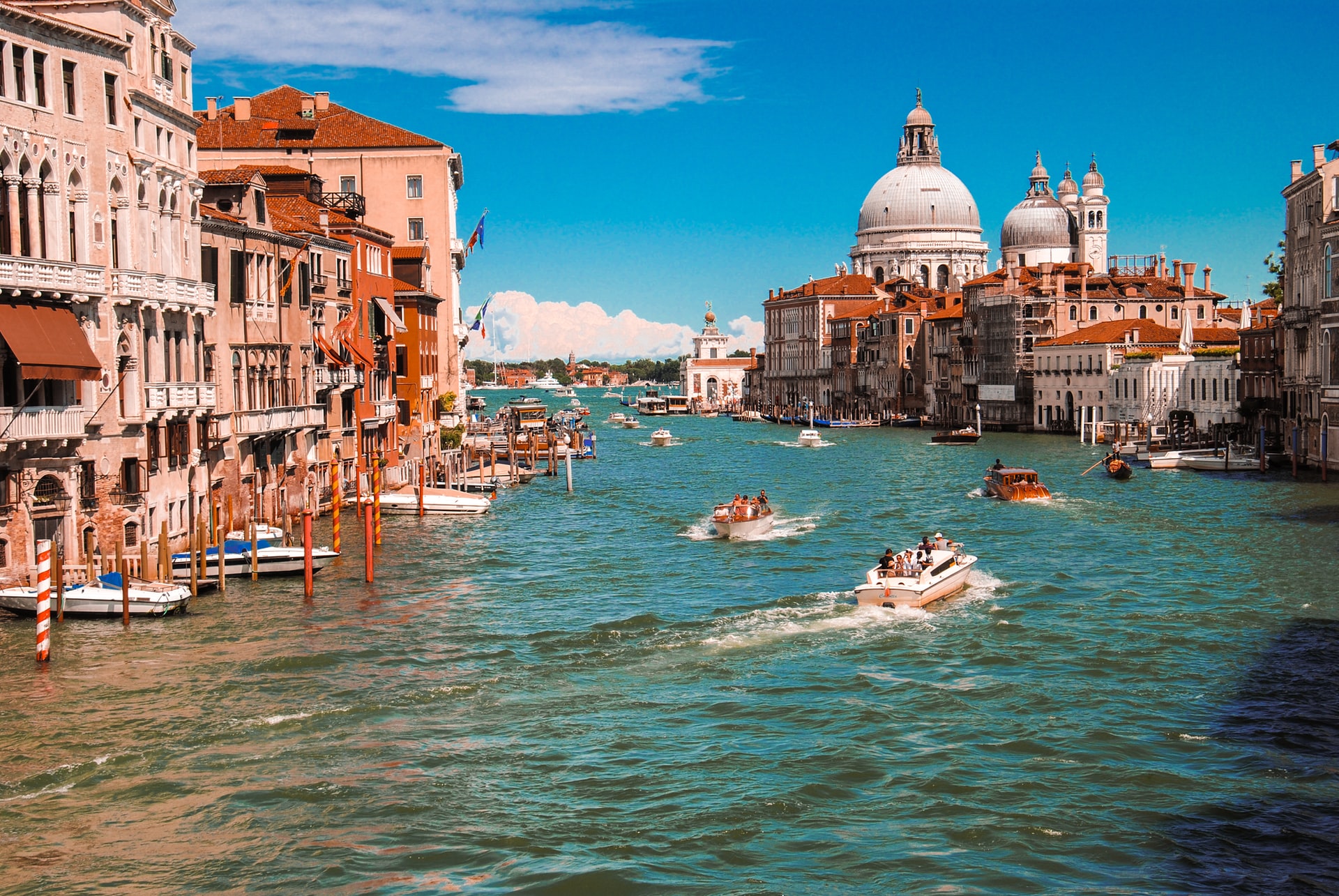Travel Destinations in Italy
Few places are as high on the bucket lists of travelers as Italy. Whatever your travel preferences are, you’ll find them satisfied in this exotic and familiar country. History, art, food, music, architecture, culture, sacred sites, charming villages, and breathtaking scenery abound in an atmosphere that only the most jaded cynic could resist.
From the soaring Dolomite mountains in the north to the beaches of Puglia and the ancient temples of Sicily, Italy has it all. These range from magnificent natural and scenic wonders to some of the world’s greatest works of art and architecture. You can not go wrong no matter where you go.
1. Tuscan Hill Towns
Tuscany’s undulating landscape is crowned by stone towns whose foundations date back to the Etruscans. Each is perched on a hill, and many still retain the castles and towers that once guarded their commanding positions.
It is difficult to pick only one because each has its architecture, art, personality, and story. With its towers and mostly intact walls, San Gimignano appears much as it did in the Middle Ages when it was an essential stop on the pilgrims’ route to Rome.
Volterra was an important Etruscan center before the Romans arrived, and remnants of both civilizations can still be found today. Arezzo’s tourist attractions are the legacy of many artists, architects, and poets of the city.
2. Cinque Terre
Cinque Terre’s UNESCO-listed cliffs and rugged gorges cascade their way down to the rollers of the Ligurian Sea. This section of the Italian Riviera is home to the beautiful towns of Manarola, Riomaggiore, and Vernazza and is visited by thousands of people each year. Each of these is famous for its pastel-painted, ice-cream-colored rows of historic homes that protrude gloriously from the coast’s rocks. Meanwhile, in Monterosso, visitors flit between the new town and the city beach, sipping Piedmont wines and devouring the region’s famous pesto pasta and focaccia.
3. Bergamo
This veritable jewel of the Lombardy region, crowned by one glorious old town area (the Citta Alta), is frequently overlooked by travelers on route to the lakes of Como and Garda or the heavily-adorned streets of Milan. Criminal! Those who want to stay can explore the Upper Town’s walled area, where cobblestone streets and earthy pizzerias abound, as well as the Piazza Vecchia, which houses the bubbling Contarini fount and the soaring Campanone tower, and the Cittadella’s arched walkways. Even further up the hill in the heart of the city – and connected by funicular rail – is the charming village of San Vigilio, which boasts sweeping views of the Italian Alps’ foothills and some beautiful fine-dining establishments.
4. Florence
The Venetian capital is a unique cultural chocolate box. During the Italian power surge of the 15th century, the city became a breeding ground for the European Renaissance. That means galleries like the famed Uffizi are brimming with masterpieces by Caravaggio, Botticelli, and Albrecht Durer, while the Museo Galileo celebrates the achievements of the era’s forward-thinking scientists. The Galleria dell’Accademia also houses the revered contours of Michelangelo’s David, and the Old Town’s Duomo is one of the most glorious in Italy. The jewelers on the beautiful Ponte Vecchio are also famous, as is Florence’s lively summertime nightlife.
5. Milan
Although Milan is a central entry point for tourists due to its airport, it is frequently overlooked as a destination in its own right. That’s unfortunate because Milan has one of the highest concentrations of artistic and architectural attractions in all of Italy, and it’s a must-see.
Milan’s massive cathedral, Il Duomo, is one of the world’s most magnificent churches and the best example of the Flamboyant Gothic style. La Scala is the world’s most prestigious opera house, Da Vinci’s The Last Supper hangs on the wall of a monastery, and museums and palaces abound throughout the city, housing some of the world’s most delicate art. No fashionista can pass up a stroll through the famous Quadrilatero.
6. Amalfi Coast and Capri
Just south of Naples, the high, steep Amalfi Peninsula juts sharply into the Mediterranean, forming the southern rim of Naples Bay. It isn’t easy to imagine a more picturesque—or unlikely—setting for the towns that strew down its steep slopes.
Most of these picturesque towns’ streets are stairways, and the houses appear glued to the cliffs behind them. Flowers bloom everywhere, and beaches are nestled in emerald coves beneath the towns.
This Drive is one of the world’s most beautiful drives. Capri is located at the tip of the peninsula and is easily accessible by regular ferries, with its Blue Grotto sea cave, lavish villas, and lush gardens. Sorrento, on the Amalfi Peninsula’s northern coast, is a good base and an easy day trip from all of the region’s attractions.
8. Bergamo
This veritable jewel of the Lombardy region, crowned by one glorious old town area (the Citta Alta), is frequently overlooked by visitors en route to the lakes of Como and Garda or the heavily-adorned streets of Milan. Criminal! Those who want to stay can explore the Upper Town’s walled area, where cobblestone streets and earthy pizzerias abound, as well as the Piazza Vecchia, which houses the bubbling Contarini fount and the soaring Campanone tower, and the Cittadella’s arched walkways. Even further up the hill in the heart of the city – and connected by funicular rail – is the charming village of San Vigilio, which boasts sweeping views of the Italian Alps’ foothills and some beautiful fine-dining establishments.
9. Lecce
Lecce is a patchwork of Baroque nestled in the undulating, vineyard-clad valleys of Apulia, right in the middle of the Italian heel. By morning, visitors can explore the crumbling remains of a second-century theater. By afternoon, they can delve behind the glorious facades of churches such as San Giovanni Battista, the Church of the Holy Cross, and the bell-tower-topped Lecce Cathedral. Of course, the city has plenty of sun-drenched piazzas where gelato holes-in-the-wall give way to enticing wine bars touting Apulian cellars’ famous labels.
